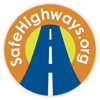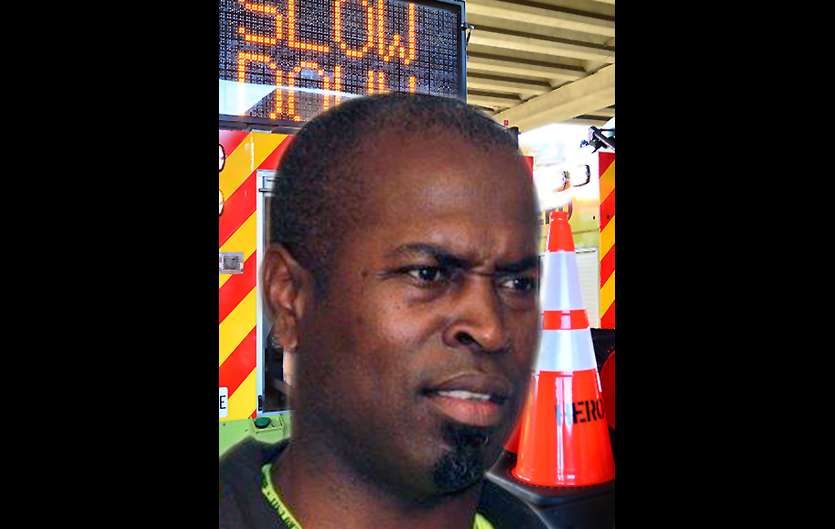News & Notes 2016
NATIONAL
Idea-Sharing Network Sessions: On June 3, 2016, the Federal Highway Administration (FHWA) and SafeHighways.org hosted its fourth Safety Service Patrol Idea-Sharing Network Session. The sessions facilitate cross-communication for state-run SSPs and encourage the sharing of ideas and best practices to improve SSP operations nationwide. The most recent Idea-Sharing Network Sessions were held in October of 2015 and February and June of 2016, and covered SSP performance measures, training, and vehicle and equipment selection, respectively. For a more detailed recap, click here.
CALIFORNIA
Anniversary: The Metro Freeway Service Patrol celebrated its 25th birthday on August 31st. Over the years, seven million drivers on L.A. County freeways have been assisted by the FSP. The program even has a Yelp page with 837 reviews and a cumulative rating of 5 stars!
CONNECTICUT
Budget Constraints: In Connecticut, the new fiscal year began on July 1, 2016 and with it came news of the Connecticut Highway Assistance Motorist Patrol (CHAMP) facing budget cuts. The Connecticut State Senate confirmed that cuts to the CHAMP program, which is co-funded by the Federal Highway Administration, were included in the final budget bill. It is unclear which services may change due to the cuts, but the state government plans to keep the patrol operating and seek alternative funding methods. Later in July, Connecticut DOT released a Request for Proposal (RFP) for sponsorship of its CHAMP program.
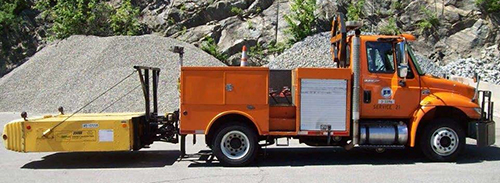
The CTDOT CHAMP program faced budget cuts in July. The DOT is now seeking alternative funding methods, including sponsorship.
FLORIDA
Life-Saving Assist: On Friday, June 3, 2016, Matthieu Widner, a member of the Florida DOT Road Rangers, stopped to assist a stranded motorist on Interstate 75. Instead of the standard flat tire, Widner discovered a father with his infant, who was blue in the face. He quickly performed CPR on the infant and after coughing up some milk, the infant began breathing again. Widner was recognized for his inspiring act of heroism that shows the best of what a Safety Service Patrol member can do for others in need.
GEORGIA
Newsworthy: Georgia’s DOT HEROs made the news on Marketplace.org, which published an overview of the program on May 26, 2016. From its inception in 1994 to help prepare for the logistical difficulties of the 1996 Olympics in Atlanta, to its success today as the national leader in traffic clearance times, Andre Todd, Jason Josey, and Karlene Barron of GDOT describe the program in detail in this in-depth article. Check it out here. In addition, Georgia DOT continues to feature the HERO program on its own social media networks, including Facebook and Twitter, with videos, Boomerang clips and photos.
In Memory: On June 21, 2016, the Cleveland Avenue Bridge over I-85 was renamed Spencer Pass Memorial Bridge, in honor of Georgia DOT HERO Spencer Pass, who was killed while helping a motorist in need. Pass’ death prompted DOT officials to lobby to have the existing Move Over Law, now known in Georgia as the “Spencer Pass Law”, to apply to HERO trucks. Georgia DOT Commissioner Russell R. McMurry stated: “We are committed to keeping our employees safe, and we need that same commitment from the public. We cannot overemphasize the need for motorists to pay strict attention when driving. Always buckle up, stay off the phone – no texting – and drive alert. And in work zones – slow down, watch for workers, and expect the unexpected.”
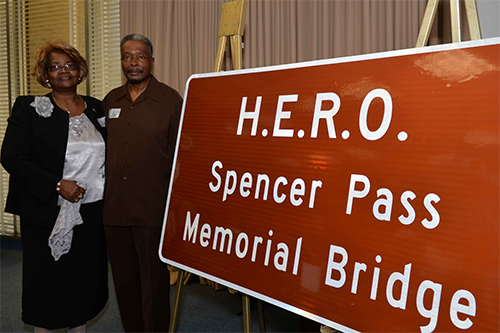
Pictured above: Mrs. Barbara Pass (mother) and Mr. Edward Pass (father) at the naming of the I-85 Bridge over Cleveland Avenue in honor of their son, Spencer Pass, a GDOT HERO.
Vehicle Updates: In December, the Georgia DOT added larger, safer trucks measuring 13 feet long by 8 feet wide and 8 feet tall to its fleet of HERO vehicles. The new trucks feature roll-up doors, which are thought to be safer than swinging doors that could swing into the flow of traffic and pose a hazard. The HERO patrol’s larger vehicles are intended to improve response time and safety for both HERO operators and the traveling public.
MAINE
Sponsorship: In May, the Maine Turnpike Authority (MTA) released a Request for Proposal for sponsorship of its Service Patrol program. The Service Patrol program, which operates in two seasonal phases, covers routes on I-95 between exit 48 in Portland and exit 32 in Biddeford, as well as the Turnpike between the Piscataqua River Bridge and Kennebunk.
NEVADA
Milestones: The Nevada DOT announced in February that the Las Vegas Freeway Service Patrol (FSP) aided 19,285 disabled vehicles in Southern Nevada in 2015 – a 15 percent increase over 2014. The FSP also made a total of 33,584 freeway mitigations in 2015, which is a 35.3 percent increase from 2014, and received a 99.9 percent public satisfaction rate in 2015.
Newsworthy: The Nevada DOT FSP was featured on several news segments providing best practices and safety measures that motorists can take while driving in summer heat. Hot weather-related incidents include cracked tires that go flat and overheated cars. The FSP also encouraged motorists to have extra water and coolant on hand in the summer heat.
NEW JERSEY
Newsworthy: A local radio station highlighted the work of the NJDOT Safety Service Patrol in August. In addition to providing information on coverage hours and areas, the radio emphasized the importance of moving over or slowing down for SSP vehicles on the side of the road.
NEW YORK
Life-Saving Assist: In August, a NYSDOT HELP operator prevented a wrong-way driver from crashing into oncoming traffic on the westbound side of I-287 near the Tappan Zee Bridge in Elmsford, New York. The incident was featured on several news programs. The HELP truck driver, Dennis Vargas, took action and positioned himself in the path, and in harm’s way, of the wrong-way driver, who was experiencing a medical emergency. Vargas was able use his truck to slow the vehicle to a crawl until he had to get out of his truck, knock on the window of the car, only to find that the driver was unresponsive with his hands still gripped to the steering wheel. Vargas then opened the car door and put the car in park to stop the vehicle, and removed the keys from the ignition, likely saving many lives in the process, and preventing a head-on accident.
PENNSYLVANIA
Milestones: Last Fall, the PennDOT State Farm Safety Patrol announced it had assisted more than 16,600 motorists in the first three quarters of the year. The breakdown of the number of assists in each service patrol region showed the highest number of assists coming from Bucks, Chester, Delaware, Montgomery and Philadelphia counties, which had a combined 11,375 (69% of the total) assists. In 2014, the patrols assisted 22,281 motorists.
Newsworthy: The PennDOT State Farm Safety Patrol was featured in a news article on The Morning Call, where PennDOT officials explain how their services are free to the public, and how the program cost is offset by sponsorship. In Pennsylvania, the patrols responded to more than 22,000 stranded motorists in 2015 according to numbers released by PennDOT. The article explains how The LeHigh Valley Transportation Study is a clearinghouse for approximately $110 million in highway, bridge and transit money each year, and founded the Safety Patrol in 2005.
SOUTH CAROLINA
Milestones: The South Carolina DOT State Highway Emergency Program (SHEP) celebrated its 20th anniversary this year. Since its inception in 1996, SHEP has assisted more than 771,000 drivers. See interviews with SSP drivers and state police, who commend the program here.
New Maneuver: South Carolina DOT SHEP drivers learned new maneuvers to push disabled vehicles to the side of the road and clear the highways faster. The new maneuvers include using chains to safely roll over a flipped vehicle, as well as using bumpers on the SHEP trucks to safely push a disabled vehicle to the shoulder.
TENNESSEE
Expansion: A new $5.3 million federal grant has enabled the Tennessee DOT to expand service of its HELP program in Chattanooga. The DOT plans to add more trucks, drivers, and routes in Chattanooga, as well as expand the patrol to east, middle, and west Tennessee. Chattanooga will add 3 additional operators and trucks, bringing the total fleet to 17 trucks. In the Jackson area, 6 new operators and trucks are being added, which brings the total fleet to 25 trucks. Nashville will add 9 new operators and trucks, totaling 33 trucks, while Knoxville will add 3 new operators and trucks, totaling 17 trucks.
TEXAS
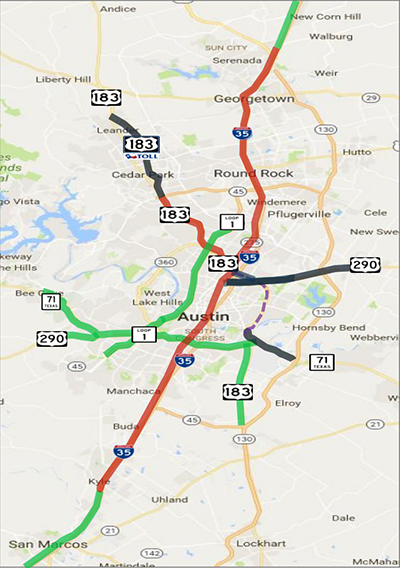
The Texas Department of Transportation announced plans to expand coverage of it HERO program. The red lines indicate existing patrol coverage, the green are new coverage areas, and the black are areas planned for future expansion.
Expansion: The Central Texas Regional Mobility Authority announced plans to expand its Highway Emergency Response Operator (HERO) program to cover more than 180 miles on seven highways by mid-2017. On September 12th, Assistant Director of Transportation Operations for the Austin District of the Texas Department of Transportation, John Nevares, presented the idea to the Capital Area Metropolitan Planning Organization transportation policy board. The plan included a new funding model that provided enough funding for the expansion and for program operations through January 2018.
VIRGINIA
Newsworthy: Virginia DOT Safety Service Patrol (SSP) Patrolman Ralph Kirk described his job and how much he loves helping people in need during a recent news interview. “It makes a person feel good knowing that you are making a difference in people’s safety in their lives in keeping them safe,” Kirk said. The article also mentioned how the Virginia SSP responds to over 10,000 calls for help every year.
Roadside Injury: In January, a Virginia DOT SSP driver was helping a stranded motorist on westbound I-66 when he was injured by a fatigued driver who crashed into the SSP truck. Both the stranded motorist and the fatigued driver were also injured. The fatigued driver was charged with reckless driving and failing to yield to emergency vehicles, which is a requirement under Virginia’s “Move Over” Law.
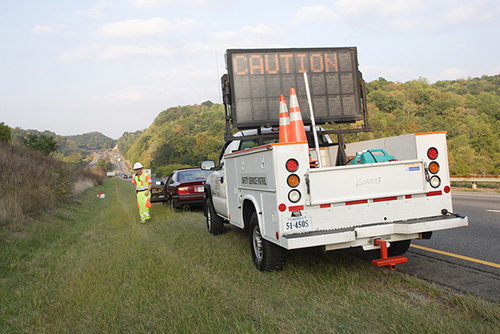
In Virginia, motorists must slow down or move over for Safety Service Patrol vehicles. Photo courtesy of VDOT Flickr.
Expansion: The Virginia DOT recently expanded their SSP on I-95 to offer additional service and traffic control. While the SSP currently operates on various routes around Richmond from 5 AM to 9 PM, the new overnight route will cover I-95 from I-295 to Route 10 from 9 PM to 5 AM.
Event Coverage: Virginia DOT expanded its SSP coverage in advance of the Pilot Flying J Battle of Bristol held at the Bristol Motor Speedway from September 9-11. The patrol was available to help stranded motorists between the Tennessee/Virginia state line and Exit 22 in Abingdon Friday-Sunday.
WASHINGTON
Metro SSP: The Seattle Department of Transportation (SDOT) Incident Management Response Crew, one of the exclusively metro SSPs in the country, posted a blog that provides an overview of their SSP, including a video that describes their services and equipment and showcases their employees.
WEST VIRGINIA
Operations: The West Virginia DOT plans to end its contract with a private operator of its Courtesy Patrol, citing that the state operating the patrol in-house will be less expensive and more efficient than the current contract, which is valued at $3.4 million.
WISCONSIN
Sponsorship: The Wisconsin DOT released an RFP for sponsorship of its Work Zone Freeway Service Team (FST). The FST covers routes on US Route 41, I-90, I-94, I-894, US Route 45, US Route 12, US Route 18, Wisconsin State Rote 441, and I-39. The FST provided over 9,000 assists in 2015.
In Memoriam – Moses King, Georgia HERO
On March 15, 2016, Moses King, a Georgia DOT HERO, died of injuries sustained after being struck by a drunk driver on August 1, 2015. King joined the Georgia DOT HERO program in September of 2014 as a trainee, and in January of 2015, he achieved promotion to HERO Operator 1. In a public statement, Georgia DOT Commissioner Russell McMurry wrote of Moses: “He exhibited the aptitude, responsibility and the professionalism to be placed on the weekend, overnight ‘Delta’ shift. When you ask Moses’ co-workers and supervisors who this man was…the words you hear are…soft spoken, dedicated, and committed with an unyielding willingness to get the job done.” We offer our condolences to the King family and to Moses’ Georgia DOT family.
